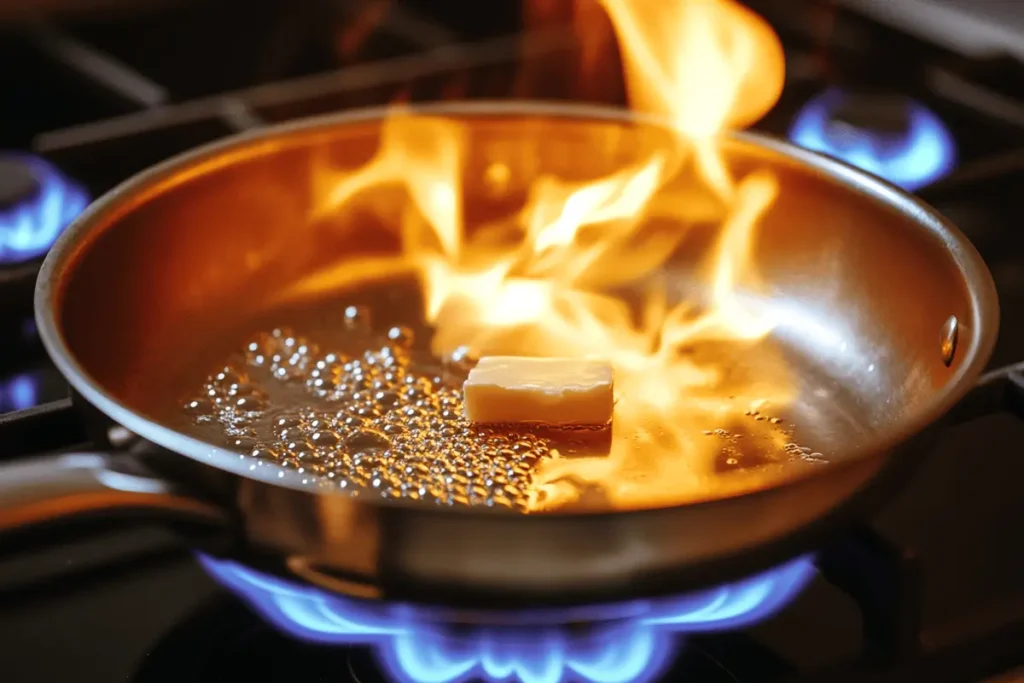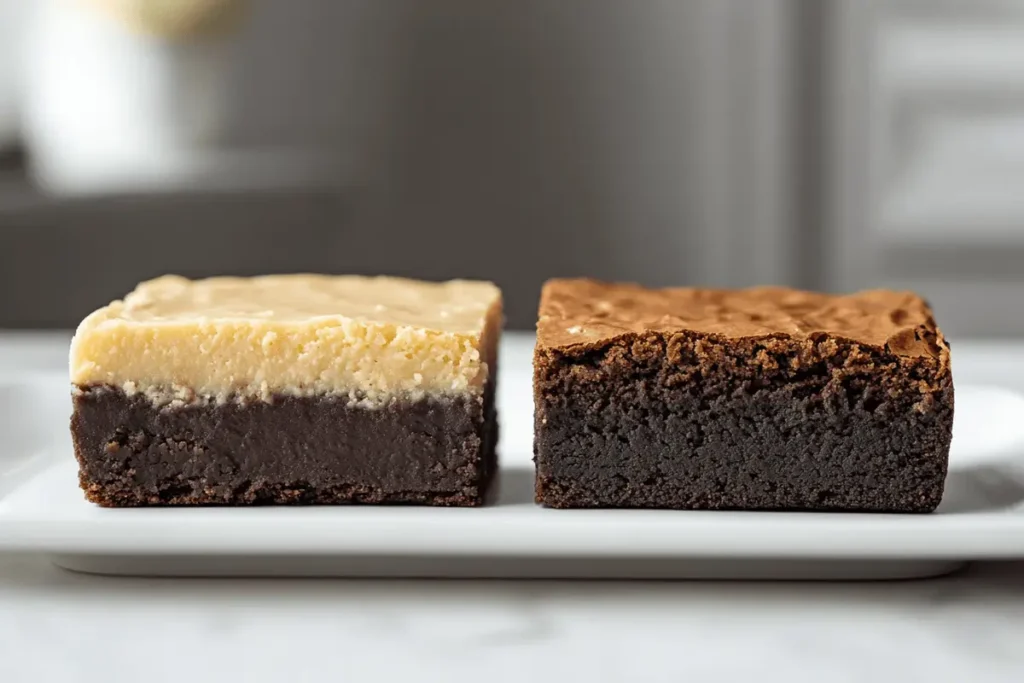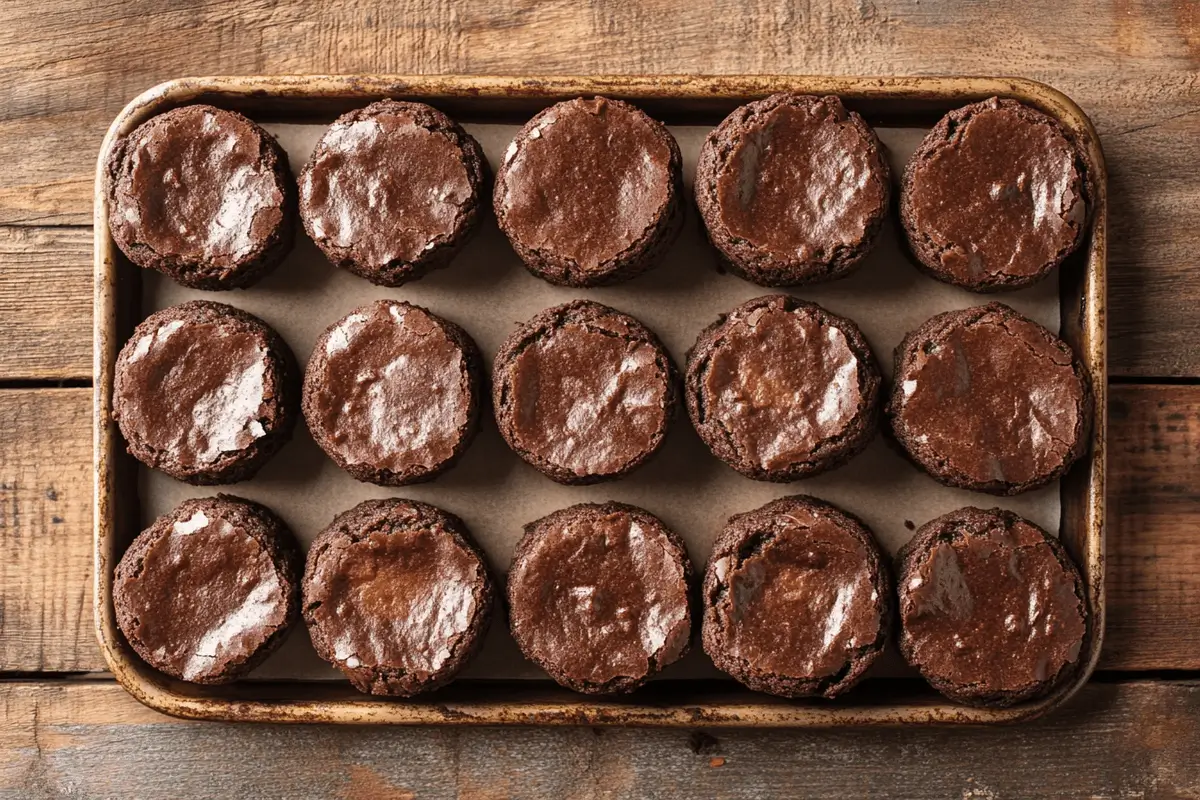Browning butter transforms ordinary brownies into extraordinary treats. It impacts both flavor and texture. This article explores the science and magic behind this technique. It details how browning butter creates nutty, complex notes, and a chewier bite, transforming your favorite brownie recipe.
Table of contents
- Understanding Browning Butter
- The Impact on Brownie Flavor
- The Effect on Brownie Texture
- The Science Behind the Changes
- How to Brown Butter Correctly
- Using Browned Butter in Brownies
- The Role of Browned Butter Fat Content
- Exploring Maillard Reaction Products in Brownies
- Brown Butter and Chocolate Pairings
- Brown Butter and Salt
- Brown Butter Flavor Infusions
- Brown Butter and Toasted Nuts
- Brown Butter and Texture Variations
- Brown Butter Storage Tips
- Brown Butter in Other Baked Goods
- Common Mistakes and How to Avoid Them
- Conclusion
- Frequently Asked Questions (FAQs)
Understanding Browning Butter

The stages of browning butter on a stove.
Browning butter, sometimes called beurre noisette, is a cooking technique. It involves melting butter over low heat. The process goes past the melting point. Accordingly, the milk solids in butter cook and brown. This reaction, the Maillard reaction, creates a depth of flavor. Additionally, the butter develops a nutty aroma and taste. The process involves three key stages. First, the butter melts. Second, it foams and bubbles. Third, it turns light brown.
The changes occur due to the Maillard reaction. This chemical reaction occurs between amino acids and reducing sugars. The milk solids in the butter contain both. Therefore, as the butter heats, these components break down. Specifically, lactose, the sugar in milk, breaks down. This releases compounds that create the nutty aroma. Indeed, it is this transformation that creates the unique flavor profile of browned butter. It goes far beyond simply melting butter. Instead, it’s a deep flavor development process. This simple step can greatly impact your baking. This especially holds true for brownies.
The Impact on Brownie Flavor

Regular vs. browned butter brownies: see the difference.
Browning butter profoundly influences the flavor of brownies. The process adds depth. It enhances richness. Furthermore, it creates a distinct nutty undertone. Using regular melted butter will produce a standard brownie. However, browned butter introduces a complex flavor. This makes each bite more satisfying. The difference is quite noticeable. Therefore, using browned butter can elevate the flavor profile. It gives brownies a more sophisticated taste. It also balances the sweetness of the chocolate.
In comparison, regular melted butter simply adds fat and moisture. Conversely, browned butter brings a much richer taste. This is because the milk solids caramelize as they cook. This process creates a more intense flavor. When used in brownies, browned butter complements the chocolate. It brings warmth and depth. It makes the brownies taste less one-dimensional. Consequently, using browned butter is beneficial. It allows for a more flavorful experience. Check out this guide for a good example on how to use it: How to Brown Butter. This external source, which is from a non-competitor site, will give you additional insight. Indeed, it elevates the overall flavor.
The Effect on Brownie Texture
Beyond flavor, browning butter significantly affects texture. Specifically, it influences the moisture, chewiness, and denseness of brownies. When using melted regular butter, you get a more cakey texture. However, with browned butter, brownies become chewier. The browning process reduces the overall moisture content of the butter. This will concentrate the fats and solids. Thus, this results in a denser, chewier texture. The texture change is very significant.
Regular butter contributes to a softer, more cake-like texture. In contrast, browned butter creates a fudgier texture. The browned milk solids provide a slight graininess, adding to the chew. Furthermore, the reduced moisture in browned butter helps form a more compact brownie. This results in a more substantial bite. Therefore, for those who prefer a dense and fudgy brownie, browning butter is ideal. Also, it makes your brownies have a more satisfying consistency. Also, it improves the overall mouthfeel. It allows for a far superior brownie. To learn about how fat impacts the texture of brownies, explore this article: The Science of Brownies. This external resource offers useful science behind how ingredients change a recipe.
The Science Behind the Changes
The remarkable changes browned butter brings to brownies stem from intricate chemical reactions. Primarily, the Maillard reaction is key. This reaction occurs when amino acids and sugars react. It happens in the presence of heat. During this process, the milk proteins and sugars in the butter break down. This creates new compounds. These compounds are responsible for the nutty aroma and flavor. The process is not just about melting butter. It’s about changing its composition.
Additionally, the browning process affects the fats. The fat breakdown changes the overall structure of the butter. This interaction with gluten affects how brownies bake. Therefore, browned butter helps create a denser, chewier texture. The fats contribute to the tenderness. The Maillard products help create a deeper taste profile. The gluten in flour also interacts with the changed fat content. It influences the final structure of the brownies. Therefore, understanding the science helps maximize the benefits. For more detailed information, you can also view this resource: Understanding Brown Butter.
How to Brown Butter Correctly
Browning butter requires care and attention. First, use a light-colored pan. This helps you see the color change. Second, use low to medium heat. This ensures the butter does not burn. The process takes a few minutes, depending on the heat level. Next, melt the butter completely. Then, continue cooking and stirring occasionally. As the butter heats up, it begins to foam. Afterward, the foam subsides. The milk solids will then start to brown.
Consequently, as the butter cooks, it will transition to a light brown color. Furthermore, it will release a nutty aroma. Thus, these are indicators that the butter is browning. It is important to watch carefully. Also, make sure to stir to prevent burning. Therefore, you will know your butter is done when it reaches a light brown hue. Also, it will give off a distinct nutty smell. Finally, remove the pan from heat. Then, transfer the browned butter to a heatproof bowl. Let it cool before adding it to your batter.
Using Browned Butter in Brownies
Before using browned butter in your brownie batter, it needs to cool. This prevents the heat from prematurely cooking the eggs. Also, it allows the flavors to meld. Furthermore, using it when it is hot can affect the final texture. Therefore, be sure the browned butter is cooled, but not hardened. It must still be liquid. Then, when using it in a recipe, you must adjust the liquid content. The water has already evaporated when you brown it. Thus, you might need to add a tablespoon or two of milk. This makes sure your batter is at the correct consistency.
When adding to your brownie batter, mix thoroughly to ensure it is evenly distributed. Also, do not overmix. This is to prevent tough brownies. However, make sure the browned butter is fully incorporated. This ensures that all parts of the batter are properly infused with its flavor. Thus, careful incorporation is crucial for optimal results. This step ensures the flavor and texture changes that browned butter provides will permeate the whole batch.
The Role of Browned Butter Fat Content
The fat content of browned butter, compared to regular butter, plays a key role in the final texture and taste of brownies. When you brown butter, you’re not just changing its flavor; you’re also altering its composition. The water content decreases significantly as it evaporates during the heating process. This means that you are left with a higher concentration of milk fats and solids. This will have a direct impact on how your brownies bake and feel. The concentrated fat content contributes to a tender crumb and rich mouthfeel. Therefore, understanding the change in fat content is important to see how browned butter can change a recipe.
Regular butter, with its higher water content, can result in a more cakey and less dense texture. The reduced moisture in browned butter, along with the increased fat content, promotes the development of a fudgier, chewier texture in your brownies. It also gives the brownies a richer and more intense taste due to the concentrated fats and milk solids. The careful balance of these factors is essential for achieving the desired texture. Experimenting with ratios of fat and liquid helps you to understand what does browning butter do for brownies fully.
Exploring Maillard Reaction Products in Brownies
The Maillard reaction, the key process behind browning butter, produces hundreds of different flavor compounds. These compounds are not present in regular melted butter. This is what makes browned butter so unique and transformative for baking. The nutty, toasty notes that you taste are from these complex chemical reactions. These flavors work in harmony to enhance the overall profile of your brownies. In brownies, the Maillard reaction happens not only in the butter but also in the baked product.
Understanding these compounds is important. They contribute to the depth, complexity, and richness of flavor in brownies. They also enhance the savory taste and smell of the baked item. When using browned butter, the Maillard products in the butter interact with the other ingredients in your batter. This adds to the overall experience. The process creates layers of taste and adds character to the brownies. These products not only create a great taste but also interact with gluten development, as mentioned previously. These changes are an important factor to grasp when considering what does browning butter do for brownies.
Brown Butter and Chocolate Pairings
The combination of browned butter and chocolate is a match made in baking heaven. The rich, nutty notes of browned butter complement the deep, intense flavor of chocolate beautifully. The balance is what creates that irresistible treat. The bitterness of dark chocolate is beautifully tempered by the caramel-like notes of browned butter. This interplay of tastes results in a more satisfying experience that is both indulgent and complex.
When pairing chocolate with browned butter, consider the type of chocolate you are using. Dark chocolate tends to harmonize perfectly with browned butter’s complex notes. Milk chocolate pairs nicely as well, but it might require you to adjust the other ingredients in the recipe to maintain the perfect balance of taste and sweetness. White chocolate is often complemented by browned butter’s deeper notes, creating a delicious, unique treat. By understanding how these two work together, you can create brownies that are more than just the sum of their parts. The interaction shows what does browning butter do for brownies with another key element, chocolate.
Brown Butter and Salt
Salt is a crucial element in baking. It enhances all the flavors, and this is especially true when using browned butter. Salt balances the sweetness. It brings out the nutty and complex tones of the browned butter. A pinch of salt can take your brownies from good to great. It will enhance the different tastes of the browned butter and the chocolate.
When using browned butter in your brownies, do not forget to adjust the amount of salt in your recipe. The concentrated nature of the browned butter can lead to a more intense flavor profile. So, it is important to add a touch of salt to make a perfect treat. Using coarse salt is also recommended for a slight textural contrast. Experimenting with salt can significantly improve the outcome, emphasizing what does browning butter do for brownies.
Brown Butter Flavor Infusions
One of the great things about browning butter is its ability to absorb and enhance additional flavors. This makes it a great way to add unique twists to your brownie recipes. The addition of herbs, spices, and even certain extracts during the browning process can create unique taste combinations that can significantly enhance your brownies. You can add a sprig of fresh rosemary or a cinnamon stick when you’re browning the butter to infuse it with these delicious flavors. These flavors will permeate the butter, giving your brownies a complex, layered taste.
Another option is to toast nuts in the browned butter, which adds a nutty flavor and texture. This technique allows you to bring out the natural oils in the nuts. This creates a more intense taste. Using extracts, like vanilla or almond, can add another layer of flavor to your brownies. The possibilities are truly endless. These different infusions illustrate what does browning butter do for brownies in terms of flexibility and enhancing flavor profiles.
Brown Butter and Toasted Nuts
The combination of browned butter and toasted nuts can create an amazing sensory experience in your brownies. The process of toasting nuts in browned butter not only intensifies their inherent tastes but also adds a great textural element to your baked goods. The nutty, slightly caramelized notes of the toasted nuts complement the rich flavor of the browned butter perfectly.
When toasting nuts in the browned butter, it is important to do this at the end of the browning process when you are close to removing the pan from the heat. This prevents them from burning. As you toast them, stir them to ensure an even toast. The toasted nuts add a delightful crunch and enhance the overall taste profile of the brownies. The method showcases what does browning butter do for brownies for texture and enhancing natural flavors.
Brown Butter and Texture Variations
Understanding how browned butter impacts the texture of brownies is important for achieving a wide range of desired results. As discussed earlier, browned butter tends to yield a fudgier, chewier brownie compared to regular melted butter. However, there are ways to adjust the recipe further. This is to explore other texture options. You can experiment with the ratio of butter to other fats. This will create unique changes in feel. You can also use different types of sugar. This will help you to control the moisture content of your brownies.
Another variable is to incorporate other ingredients like cocoa powder or even different types of chocolate. Each of these can have an impact on the overall texture of the brownies. By understanding these variables, you can create brownies with a wide array of textures. The versatility of browned butter highlights what does browning butter do for brownies.
Brown Butter Storage Tips
To ensure the browned butter retains its flavor and consistency, it is important to store it properly if you are not going to use it right away. After browning it and removing it from the heat, allow it to cool completely. Then, transfer it to an airtight container and store it in the refrigerator. Storing it in the fridge will help solidify the butter, which will be a little easier to measure and use in a future bake.
When you’re ready to use it, you might have to gently melt it again over low heat. This makes it easy to use. You can also store it in the freezer. However, this is only recommended if you will not be using the browned butter for a while. If you store the butter properly, it will retain its flavor and texture qualities for up to a week or so. These tips will help you understand how to fully manage this key ingredient to see what does browning butter do for brownies on a regular basis.
Brown Butter in Other Baked Goods
The use of browned butter is not limited to brownies alone. The nutty, complex taste and texture it imparts makes it a perfect addition to other baked goods. You can try it in cookies, cakes, and even pie crusts. The same technique of melting and browning the butter can be used to add that enhanced taste and texture to these other baked goods.
When you use browned butter in cookies, it adds a chewy texture and caramel-like taste, much like in brownies. In cakes, it can give them a rich, moist texture and an added depth of flavor. For pie crusts, it can add a unique savoriness that is both comforting and interesting. It will give a unique taste and texture to a simple pie. Understanding how to use browned butter in a variety of baked goods opens up the door to a world of great options. This versatility emphasizes what does browning butter do for brownies and beyond.
Common Mistakes and How to Avoid Them
Browning butter can be tricky. There are some common mistakes to be aware of. First, burning the butter. Second, not stirring enough. Third, over-browning the milk solids. These mistakes can ruin the flavor of your browned butter. Therefore, it is vital to understand what causes these mistakes. This will help you avoid them. Burning the butter happens when the heat is too high. Not stirring enough can cause the solids to burn on the bottom. Over-browning leads to a bitter taste.
However, if you accidentally burn the butter, it is possible to salvage it. You can strain it through a cheesecloth. This removes the burned solids. You can also add a small pat of regular butter. This helps dilute the burned flavor. Therefore, careful observation can minimize common pitfalls. Also, with a little practice, you can get great results. Learning from each mistake is valuable. It helps you perfect the technique.
Conclusion
Browning butter significantly enhances brownies. It changes the flavor and texture. The Maillard reaction creates nutty, complex flavors. Also, the reduced moisture results in a chewier texture. Therefore, using browned butter is a simple technique. It can transform ordinary brownies into an extraordinary dessert. However, it is important to practice. Learn the signs of properly browned butter. Also, do not be afraid to experiment with flavor variations.
In conclusion, browning butter is a game-changer for brownies. This simple step adds a depth of flavor and a texture. It will set your brownies apart. Furthermore, it elevates the overall taste experience. Finally, using browned butter is worth the effort. It will help create truly unforgettable brownies. Therefore, next time you are baking, consider using this technique. It may just change the way you bake.
Frequently Asked Questions (FAQs)
Brown butter adds a nutty, complex flavor. It also gives brownies a chewier, denser texture. This is due to the changes in butter composition.
Yes, browning butter makes a significant difference. It enhances the flavor and texture. Regular melted butter does not create the same effect. It elevates brownies from ordinary to exceptional.
The purpose is to develop flavor. The Maillard reaction creates nutty notes. Also, it reduces moisture for a denser texture. It also adds depth. It can elevate a variety of dishes.
Fudgy brownies have a high fat content. They also have less flour. Browned butter, with its reduced moisture, contributes to a fudgy texture. The fat is key. The lack of cakey elements also helps.

